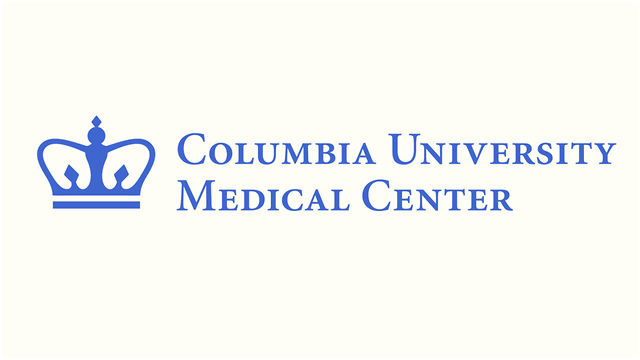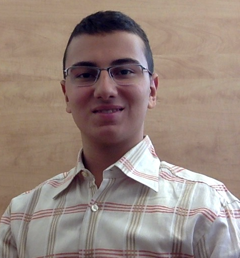

Aras Curukcu
Intern, Department of Biomedical Informatics, Columbia University Medical Center / NewYork-Presbyterian Hospital
Volunteer, Department of Cardiology, Holy Name Hospital
Early Life
Aras was born in Istanbul, Turkey, on March 5, 1999. Around the age of five months, a 7.6 magnitude earthquake had occurred bringing destruction upon the homes and lives of thousands of people. Aras was one of the babies that was fortunate enough to have survived through a disaster. The earthquake had influenced Aras's family in the decision to move to the United States of America. His family was seeking a better and more promising future for their young boy. He is a very selective person that favors speaking with educated people that are above his age. He is fluent in Armenian, Turkish, and English and has self-studied Russian since the age of 7.
High School Career
As a freshman, Aras attended Fort Lee High School and achieved high honor roll. As a sophomore, his family relocated to another town, River Edge, where he currently lives in. As a junior, he has achieved an award for the National Honors Society and has started volunteering at Holy Name Hospital. He continued to remain achieving honor roll for the remainder of his high school years. By the end of his junior year, during the summer, Aras had started an internship at Columbia University Medical Center with Dr. Adler Perotte. At Columbia University, he has conducted research along with Dr. Adler Perotte, regarding the importance of the usage of electronic health records in the United States.
Experience at the Department of Cardiology
Aras has always had the dream of contributing to the world and his country, the United States of America. He saw the suffering of people on a daily basis and this has been the crucial factor that has motivated him to sustain his long-term goals regarding the world. Starting out as a volunteer at Holy Name Hospital, his tasks included visiting patient rooms to check with the patient on any specific needs, emptying out patient charts, creating new patient charts, organizing paper orders that arrived regarding individual patients, and designing folders for new-coming patients. From this experience, Aras had always wondered about the safety and efficiency of the usage of paper for patient information and subscribed medication.
Experience at the Department of Biomedical Informatics
In the beginning of the internship at Columbia University Medical Center, Aras was only a beginner in computer programming languages, specifically python. Under the instruction of Dr. Adler Perotte, Aras had successfully learned how to use python as a programming language. Dr. Adler Perotte and Aras created a python code that was advanced enough for the data, from Centers for Medicare and Medicaid Services, to display on a choropleth map with additional features. With the help of another intern named Richard, Aras became exposed to a more sophisticated college textbook that included linear algebra, calculus, and statistics. Some of the exposure includes Bayesian Linear Regression, K-means Clustering, and Neural Networks from the textbook named Pattern Recognition And Machine Learning by Christopher M. Bishop. Other than learning high levels of python and becoming exposed to mathematical problems that will be consisted in his future mathematical courses for engineering, Aras has also learned how to create an HTML website using the suggestions of Dr. Adler Perotte and self-studying. He has learned markup languages including Cascading Style Sheet, or CSS, and Hypertext Markup Language, or HTML, which are essential for the creation of well-thought out websites, and he has been introduced to a second programming language named Javascript.
Research
1. Distribution of electronic health records in the United States. One of the most fundamental issues regarding the field of biomedical informatics, and other related informatics fields, is the transfer of information onto paper instead of electronic devices by physicians and others. Paper prevents informaticians and other workers in informatics from compiling data in a more efficient manner. Using data from the Centers for Medicare & Medicaid Services and advanced levels of python, Dr. Adler Perotte and Aras Curukcu have managed to show the distribution of electronic health records nationwide [Curukcu A, Perotte A].
The Obama Administration passed the Health Information Technology For Economic and Clinical Health Act (HITECH Act), which, as of 2011, the Centers for Medicare and Medicaid Services began handing financial incentives to healthcare providers that were providing evidence of "meaningful use" of electronic health records. Meaningful use has three stages, each that has its own requirements that physicians and hospitals must meet in order to receive incentives. If deadlines are not met by physicians and hospitals, the incentives will be lowered as part of a punishment. The Centers for Medicare and Medicaid Services are responsible for defining the meaningful use attestation requirements included in the three stages. See here for the percentage of physicians using the first stage of meaningful use attestation in the United States. See here for the percentage of physicians using the second stage of meaningful use attestation in the United States. Unfortunately, the third stage has not been adopted by physicians as of yet.
Last Updated: 9 / 2016
curukcuaras @ yahoo.com / curukcua17 @ student.riverdell.org